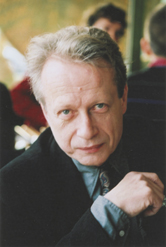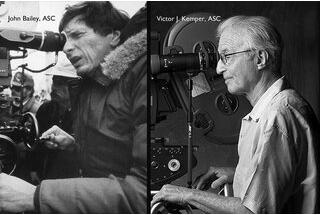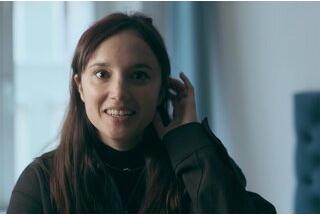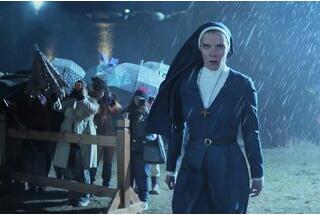Oslo Digital Cinema Conference - Workshop
by Jean-Jacques BouhonWe have to start by complementing the extreme quality of the cycle, which brought together over 200 European Directors of Photography. Each intervention led to questions and answers, allowing both the audience and the lecturers to specify number of points.
Friday May the 5th
The day was about pre-production and filming purposes.
After Imago President Andreas Fisher-Hansen’s welcoming, John Graham, EDCF (European Digital Cinema Forum) secretary-general, introduced his structure’s work. Their goal is to harmonise the digital cinema norms, that otherwise threaten to be enacted only by more or less American institutions. He also insisted on making European voices count inside the ITU, a UN organism that deals with international digital broadcasting.
Lasse Svanberg (from the Swedish Film Institute) then led us through a witty and informative history of digital cinema. I still remember the nick-names he gave to the all-digital or all-photochemical extremist supporters: the first were “neophiles” and the latter represented the “PCF” (Photo Chemical Fundamentalists)...
I took part, that morning, in the “Shooting on film or Digital equipment” program, led by Kommer Kleijn with two Cinematographers: John Christian Rosenlund from Norway and Bjørn Blixt from Danemark. The interesting part of our discussion was the very diverging opinions we had: one of us had totally hated his unique HD experience...
After a quick meal, we were proposed a digital camera presentation that went along with their traditional demonstration films. People from Sony (HDW 900 and a new camera, missing), Panasonic (Varicam), Thomson Grass Valley (Viper FilmStream) and Arri (D-20) were there. Many of us noticed that the films supposed to demonstrate the cameras quite often did the opposite: they talk about camera capacities that aren’t even verified in the films. As an example the Panasonic film showed a rather worrying noise in the low lights, and Sony’s had a “lines” effect, that I seldom see in feature film transfers.
David Reisner represented the ASC Technology Committee and the SMPTE. He showed us work accomplished on the ASC and DCI’s (Digital Cinema Initiatives) initiative.
The objectives of this work:
- To establish a global industry consensus about the digital projections being comparable to the 35mm first generation answer prints.
- To conserve and when possible to optimise the creative options.
- To preserve the existing heritage.
Tests and measures are made concerning charters, contrast, sensitivity and image compression.
The ASC, DCI and SMPTE collaboration has led to tests, called “Stem” (Standard Evaluation Material), that cost 250 000 $.
The idea was to shoot, in 35mm, scenes of a wedding taking place in a French village that would then be digitalised in 2K and 4K. The theatre in which the conferences took place, Filmen Hus (Oslo’s film library), was equipped with a Sony 4K digital projector. Unfortunately we weren’t shown the digital version of the tests, and only saw the 35mm versions with 2K and 4K processing. Even though the Sony projector was very good (and actually quite impressive as we would later have proof of), the 35mm projection were barely acceptable. I therefore didn’t see any significant difference between the 2K and the 4K version... Too bad...
The end of the afternoon took us through Kommer Kleijn’s considerations on HD’s creative possibilities and the discovery of a new previsualisation software, “Kframe onset”, presented by John Christian Rosenlund. Jean-Fabien Dupont, who works at Chalon, spoke for Kodak and let us share his personal views about the future of cinematographic creation. His recurrent attacks, in a very “Photo Chemical Fundamentalist” way, against electronic imaging worked against the interest of his presentation.
Louis-Philippe Capelle, Director of Photography, SBC, then talked about the shooting of Black Night with the Viper camera, film for which he received a Bronze Frog at this year’s Camerimage, and that was digitally projected in the evening.
Throughout the afternoon and the next day we could in little groups examine the different cameras on show. The organizers had given us on our arrival a planning that would help us to organise ourselves for these demonstrations. Images were shot with the Arri D-20, in order to be shown the next day transferred on a 35mm answer print.
Black Night and Sin City were projected in the evening. Sin City really benefited from the splendid digital projection that clearly served the director’s choice of image.
Saturday May the 6th
The Saturday was about digital post-production, projection and broadcasting, with a glimpse of future film conservation problems. Keefe Boemer, special effects producer of Sin City, described us this film’s post-production in a very passionate and captivating way. Matthieu and I had the chance to finish the evening in his company, and I was very impressed by his knowledge and interest in the tools and the workflows of film creation. It is quite rare to meet a producer so concerned about these problems. As I shared my surprise with him, he explained us that since he started working with director Roberto Rodrigez the lack of money had led the whole crew to learn about and participate in all the stages of filmmaking.
Peter Engleson, Nordisk Film, presented Cinevator, a device that can “shoot” digital image files in real time either on a negative, an internegative or an answer-print, in which case it can also add sound and subtitles. In short, it is an inexpensive machine with very interesting possibilities for low budget films. Two versions of Cinevator exist: Cinevator One can only transfer images on negatives and internegatives, whereas Cinevator Five also allows the answer prints, with sound and subtitles.
At the end of the afternoon we were shown the images shot the previous day with the D-20, using both a direct digital projection and a 35mm answer print, created by the Cinevator after a quick colour grading. Unfortunately, the 35mm projection, not being so good, was manifestly inferior to the beautiful digital one. The hasty colour grading didn’t improve things, and the digitally projected images, coming directly from the D-20, showed a better contrast, definition and colorimetry. This made the Cinevator promoters quite upset, and they therefore proposed all Directors of Photography a trial for the preparation of their next films in order to prove their tool’s quality.
On the Cinevation Website you can find useful information concerning the system developed by this company.
Peter Wilson, EDCF Technical Module president, gave us information about “Future Cinema and Standards”, joined by David Reisner who exposed the current situation in the United-States.
Kommer Kleijn was very concerned about grasping the present opportunities to include projection frame rates above the usual 24 or 25 frames per second.
Peter Doyle, Peter Jackson’s films and the latest Harry Potter movies colour grader, gave us a lecture on how to create and digitally colour grade a Digital Intermediate. His sense of humour, his knowledge of post-production tools (both photochemical and digital) and his ability assured him an enthralled audience.
The conference cycle ended by Eddy Goray talking about film conservation for future generations. For the moment, it turns out the most reliable option is... film.
At the end of the day we were proposed two digital projections. I only attended the second one, The Cock and Bull Story by Michael Winterbottom. I found that the quality of the projection was the most I got out of it, finding the film quite futile... But this is only a personal opinion.
On the Sunday Morning the cinematographers were invited on a boat tour around the Oslo bay, completed by a lunch and interesting discussions between colleagues.
As a conclusion I would like to insist once more on the quality of this conference cycle, its major interest being the precise information and experience sharing between cinematographers. I strongly hope that this event becomes one of the year’s most important gatherings, therefore allowing the Imago members to meet around subjects that they are dealing with on a daily basis.
(Translated from French by Anthony Sharpe)
 En
En
 Fr
Fr







